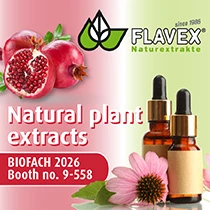Research uncovers chios mastic gum’s cosmetic applications for skin resilience
A new study reveals the inhibiting effect chios mastic gum has against specific enzymes, which play a role in degrading proteins contained within skin connective tissue. Its findings may be applied to new cosmetic formulations.
As the resin of the mastic tree (Pistacia lentiscus var. Chia), chios mastic gum is a product with a history of use as a natural chewing gum and for relieving abdominal discomfort, pain and inflammation.
“Chios mastic gum’s application in skin conditions has been known since antiquity. Among the most influential and esteemed physicians of the ancient world, Dioscorides, in the first century AD, described mastic as a skin care agent, among its other properties,” highlight the study authors.
“The Egyptians included the resin in their embalming rituals, while traces of mastic found in an Etruscan ointment of the first century BC testify to the widespread use of mastic across the Mediterranean.”
“Nowadays chios mastic gum is traded exclusively by the Chios Mastiha Growers Association and a plethora of products containing mastic can be found on the market, including foods and beverages, food supplements, oral hygiene products as well as cosmetics.”
Historical uses
Over the last few decades, several studies exposed the resin’s biological activity in diverse therapeutic targets such as inflammation, cardiovascular diseases and metabolic syndrome, highlight the researchers.
Chios mastic gum comprises the natural polymer cis-1,4-poly-β-myrcene, essential oil (chios mastic oil), and a terpene fraction that can be further divided into acidic and neutral terpenes.
 While the ancient Egyptians included chios mastic gum in their embalming rituals, it is commonly found in supplements, oral hygiene products and cosmetics today.Mastic’s individual constituents have seldom been the focal point of research despite promising data, note the study authors. The phenomenon can be largely attributed to the resin’s chemical complexity and the presence of the insoluble polymer which often hinders sample handling.
While the ancient Egyptians included chios mastic gum in their embalming rituals, it is commonly found in supplements, oral hygiene products and cosmetics today.Mastic’s individual constituents have seldom been the focal point of research despite promising data, note the study authors. The phenomenon can be largely attributed to the resin’s chemical complexity and the presence of the insoluble polymer which often hinders sample handling.
“Furthermore, the commercial unavailability of these bioactives further complicates the evaluation of their biological and pharmacological properties,” add the authors. “However, mastic’s extensive use in diverse applications highlights the need to overcome the challenges in the further exploitation of its constituents in order to unlock their full potential.”
The current study evaluated the in vitro biological activity of chios mastic gum and its individual components against elastase and collagenase enzymes to highlight its application benefits in cosmetics and skin care products.
Inhibitory effects on enzymes
Elastase and collagenase are enzymes that degrade proteins contained in skin connective tissue. Elastase breaks down elastin fibers, which is a major protein in healthy human skin, comprising over 90% of the elastic fibers that provide skin with flexibility.
The breakdown of elastin, primarily caused by the enzyme elastase, leads to sagging skin and fine wrinkles.
On the other hand, collagenases degrade the peptide bonds of collagen, the most abundant component of the extracellular matrix, collagen. Collagen is a crucial component for human skin health, providing structural support, elasticity, firmness and flexibility.
Under normal physiological conditions, these enzymes accurately regulate the maintenance of skin tissue homeostasis. However, under oxidative stress or UV radiation, they become overexpressed, leading to skin disorders such as premature skin aging and inflammation, or more seriously, degenerative diseases.
Therefore, compounds capable of inhibiting these enzymes can “potentially delay” wrinkle formation and the photoaging process.
“Additionally, as far as the authors are aware, this is the first time that chios mastic gum and its products are investigated for their anti-elastase and anti-collagenase activities,” states the paper.
Extracts, fractions and compounds
The scientists performed an extraction and fractionation process for chios mastic gum. This resulted in different extracts, fractions and isolated compounds. These include mastic’s major triterpenic acids, namely masticadienonic (MNA) and isomasticadienonic acids (IMNA).
All samples were analyzed by means of high-performance thin-layer chromatography. Finally, samples were tested for their ability to inhibit the elastase and collagenase enzymes.
“Based on the current study’s findings, for collagenase, a mixture of MNA and IMNA demonstrated the most potent activity with an IC50 value of 31.07 μg/mL, while for elastase chios mastic gum’s acidic fraction provided the most promising results with an IC50 value of 17.30 μg/mL,” the report details.
“This is of particular importance for the cosmetics industry, given that it provides a scientific base for the inclusion of mastic in cosmetic applications and justifies the traditional use of this valuable natural product, whose skin care properties have been appreciated by Mediterranean populations ever since antiquity.”
In commercial applications, Mibelle Biochemistry specializes in the mastic-based ingredient NovoRetin, a natural alternative to retinol sourced from the Greek islands. NovoRetin encourages the boost of the skin’s natural retinol activity from within, Mibelle Biochemistry claims.












